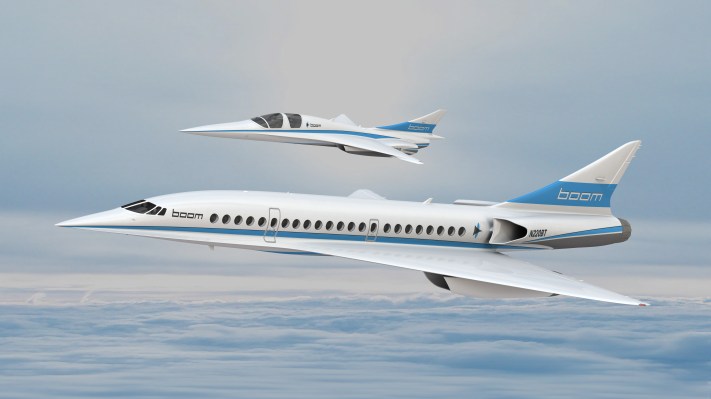Supersonic airplane startup Boom has just completed a key step on the way to building a production supersonic passenger jet; the startup finished its wind tunnel testing, verifying its first two years of aerodynamic design work and setting the stage for building the airframe that will eventually become the basis of it first flight-ready aircraft.
I spoke to Boom CEO and co-founder Blake Scholl about the completed wind tunnel testing, and asked why this was such a big step for the startup. Scholl explained that this was a key turning point because it meant being able to move on to building large-scale hardware for testing with human pilots, but he also explained that even just a few years ago, this kind of milestone would’ve involved repeated wind tunnel trials through multiple physical model iterations over a drawn-out period of time.
It used to be you do all your development in wind tunnel,” Scholl explained. “Every iteration would take six months, cost millions – you’d better be a big company. But today, you can do aerodynamic development in simulation, where each iteration takes 30 minutes and costs almost nothing, and so you can do it with a tiny team. And then when you think you’ve got it right, you go to the wind tunnel and you verify rather than develop there.”
The changes in the cost of the development process are part of what is helping Boom pursue its goal of creating a Concorde-like supersonic passenger jet that can operate at costs comparable on the traveler’s end to business class travel on regular planes today; Concorde tickets cost much more than that, and in the end operating the jets was simply too expensive for airlines.
Scholl’s goal isn’t just to get supersonic flight down to business class prices; he foresees a time when they can bring costs down far enough that supersonic travel will be accessible to anyone who can fly today. Boom sees itself having a parallel trajectory with SpaceX or Tesla in terms of massively changing the economies of a transportation tech that at first seems out of reach, he told me.
“It’s the dividing line between development and being ready to build, so you do all of your testing and simulation initially, you think you have a design that looks like it’s going to go work, and then you go to the wind tunnel and you verify with real air and real flow that you’re seeing the results that you predicted in simulation and at that point then you’re ready to go forward and start constructing large pieces of the aircraft.”
Scholl said that there was a “really awesome agreement” between the results predicting in software simulation, and the results that bore out in actual wind tunnel testing, with a few areas for improvements the team will work on before heading to the manufacturing stage.
Boom has already revealed with its first aircraft, the XB-1 Supersonic Demonstrator, will look like, but now it can actually start the task of building one that it can begin testing, which it expects to start in about a year. The Demonstrator will be a human piloted, 1/3 scale prototype of the eventual 45-passenger jet craft it aims to use for commercial service, with Virgin Galactic as its first paying customer for planes.
